Harley-Davidson overhauled its Softail range in 2018 and the improvements on paper and on the road are vast. But what about if we drag them way out of their comfort zone?
A racetrack might not be the first place that you or I immediately think of as a great destination to sample Harley-Davidson’s 2019 Softail range, but the Motor Company is a brand which goes about its business a little bit differently to most. One of the things Harley does differently (and often better) than most is customer engagement. And so, in 2019, at no less than 12 events scattered across the country, the firm gathered a gaggle of current-model motorcycles, put the word out to its hordes of current and would-be customers and the 2019 Softail Tour was underway. For the New South Wales participants, the whole shebang culminated at Sydney Motorsport Park, so we thought we’d tag along. And as it turns out, punting half-a-dozen 200-and-something kilo cruisers around a racetrack isn’t as a silly as it sounds. Well, maybe the bit where Harley opted to use the tight 1.8km South Circuit rather than the faster flowing Grand Prix Circuit was erring on the silly side of sane, but the silly side of sane is often the bit we love most about bikes.

The Softail range has been in existence for 35 years, with the unveiling of the original FXST back in 1984. It’s a platform that has spawned some of Harley’s most iconic machines, such as the hugely successful Fat Boy, the uniquely styled Rocker and the custom-styled Cross Bones to name a few. Thirty-four years and countless variants later, and after what Harley is calling the largest product development project in its 116-year history, 2018 saw the introduction of the the firm’s all-new Softail family. All Softail models feature a completely new frame that’s both lighter and more rigid, cradling either a 107 or 114 cubic-inch Milwaukee-Eight engine.
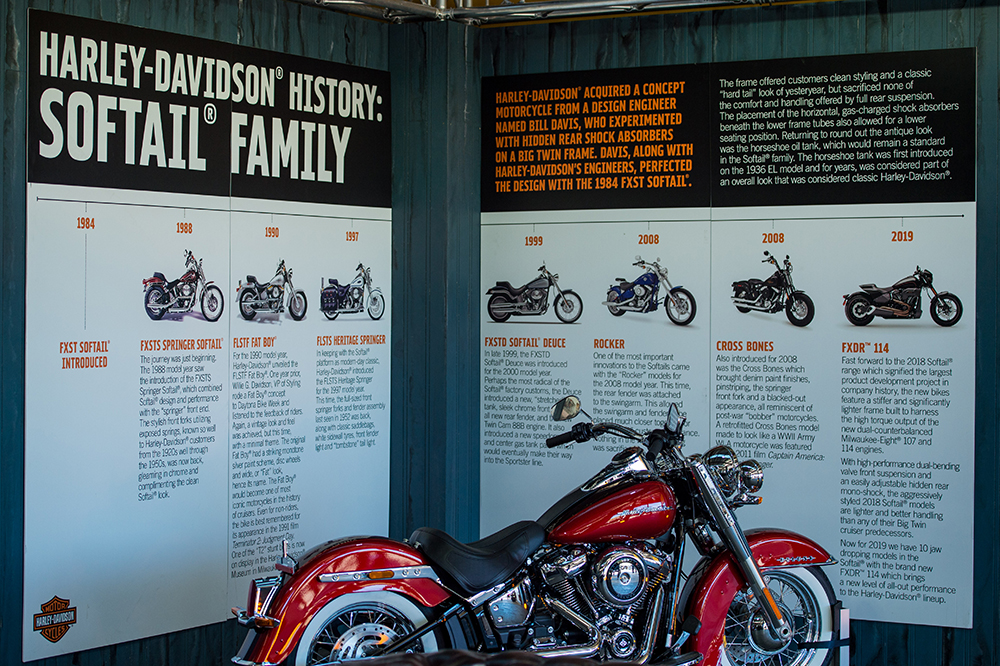
And it’s not until you wind on the throttle of a Milwaukee-Eight powered machine with the freedom that only a racetrack can afford these days, that you begin to really understand the magnitude of the development program. With no diesel spills or speed cameras that would otherwise dilute your attention on the road, the track allows you to pinpoint the improvements and process the benefits. Apart from the new-for-2018 FXDR, which is the most radical machine to come from Milwaukee in recent years, when you sit astride any of the other new Softails they feel instantly familiar. No coincidence, I’m sure, from a brand who has built such loyalty and success from inherent familiarity. There’s no doubt the new range is light years ahead of the pre-2018 models and anyone that reckons Harleys don’t go around corners or that they don’t stop haven’t ridden the current-generation Softails. Sure, you’ll drag some chrome across the deck, but none of the bikes ever tried to twist itself in knots, and things never got ugly. Impressive for a range of motorcycles called to do duty well outside their design brief. The confidence with which you can punt these bikes around a racetrack is a testament to just how good the new Softail package is. Thrust back into their intended environment, if cruisers are on your radar, then any one of them would be an exceptional bike to park in your shed. Luckily for you, there’s plenty to choose from…

© Lyndon Marceau / marceauphotography
FXDR 114
The beast within
The FXDR is a different beast. Sitting in pit lane it looks long and menacing, and heading out of the pit area and up the small straight towards turn six, the FXDR picks up speed at a rapid rate of knots. Harley claims that the 114 cubic-inch Milwaukee-Eight engine in the FXDR is the most powerful ever fitted in a Softail and it feels like it. The 116Nm of torque the 1968cc engine brings to the table is epic. Thankfully, with all that power on tap, the twin disc set-up on the front brings the bike to a halt confidently. As you throw it into the first corner, you also notice that it takes a fair bit longer before the metallic rasp of foot peg hitting bitumen comes to ear. It’s no sportsbike, but it certainly has the ground clearance the other Softails can only dream of.
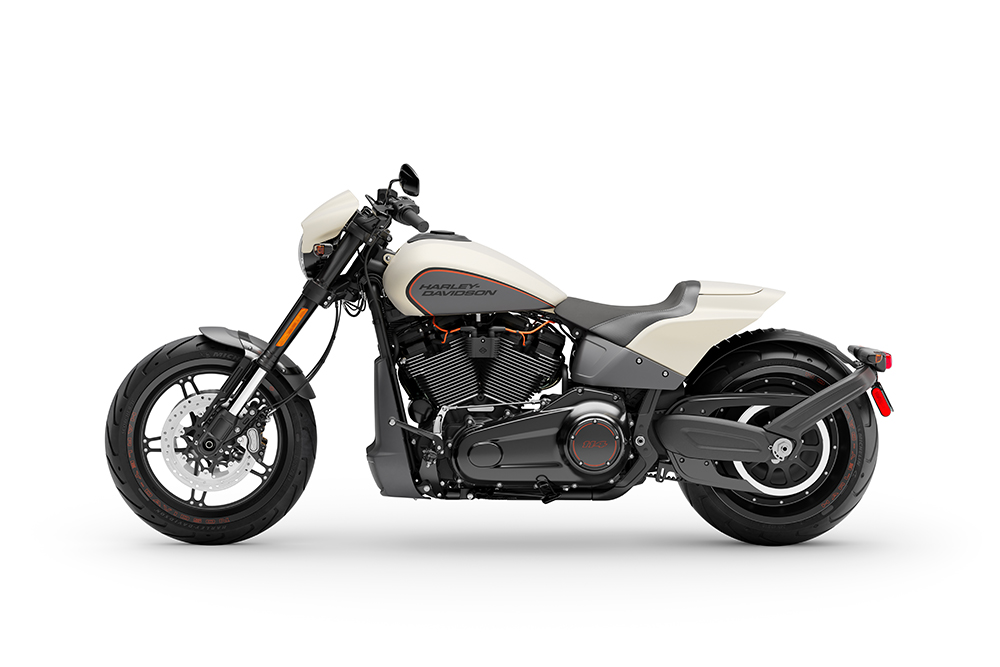
Fat Bob 114
Unique Bob
Like the FXDR, the Fat Bob has a unique look. With its odd rectangular headlight, inverted fork, fat front tyre and extended rear guard it’s radically different to any of the other Softails and certainly catches the eye. The Fat Bob is available with either the 107 or 114 Milwaukee-Eight engines, but the bigger of the two was served up to me on the day. Like the FXDR its a sub-300kg bike, so the 114 engine rockets it up Sydney Motorsport Park’s back straight at arm stretching velocities, and the twin-disc front end gets the whole package stopped without fuss. I thought that the fat front tyre of the Fat Bob may cause the bike to handle strangely, but its one of the better handling bikes in this bunch and feels sporty and fun to ride, even at the quicker speeds at the track. It’s 710mm seat height makes for a comfortable ride for taller people like me, and the reasonably high footpegs give you slightly more usable lean angle than other models, FXDR aside, of course.
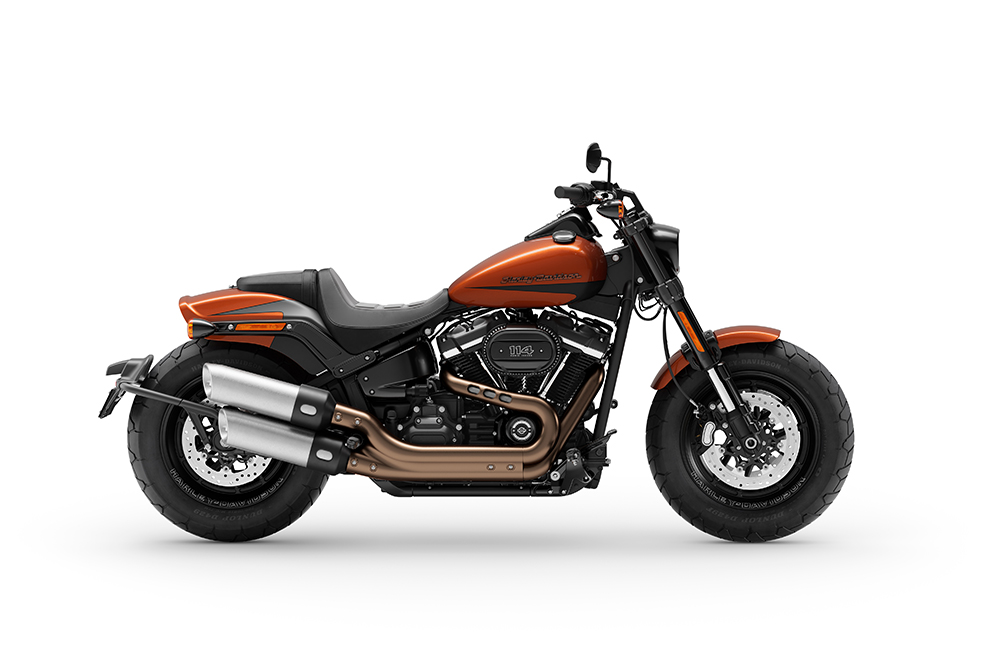
Softail Slim
lighter touch
Like its Heritage Classic and Deluxe siblings, the Slim runs nostalgic lines and takes you back to days gone by with its wire-spoked wheels, chopped fenders and single seat. Looking every bit the old-school bobber, it has the lowest seat height of the bikes I rode but it still felt comfortable and roomy. Despite running the smaller, 107 cubic-inch engine, it propelled itself along in a more spritely manner than the 114 cu-in-equipped Heritage Classic, mostly due the 25 kilos less bulk it needs to push. Like all the traditional-style Softails, you’ll need to get used to dragging chrome along the ground once the pace quickens, but the higher and narrower footboards on the new Softails keeps the bitumen at bay longer than they used to.
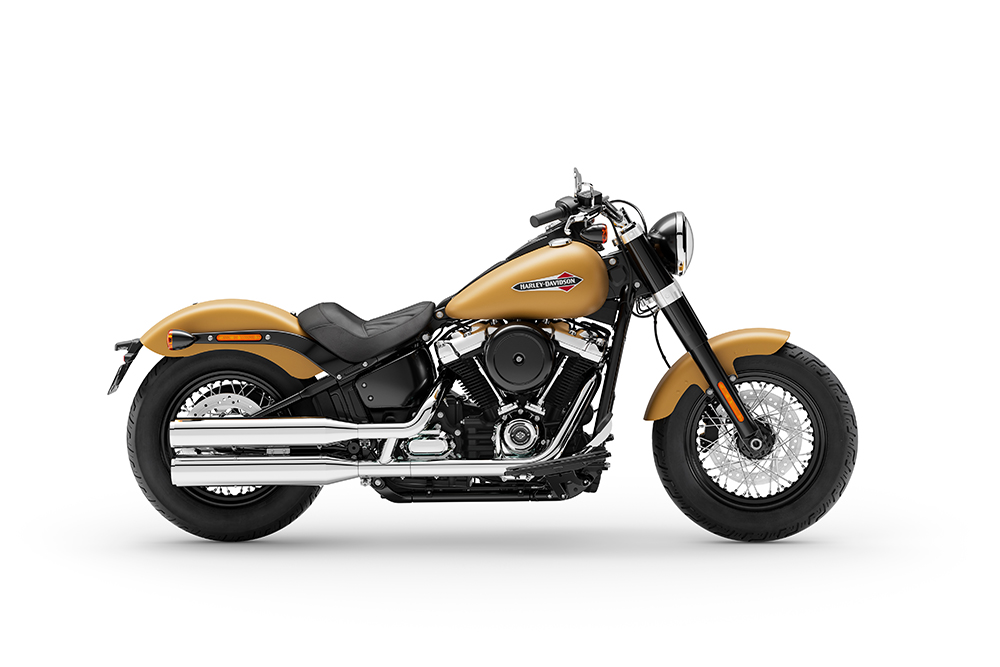
Deluxe
Bling king
Screaming every bit your traditional Harley-Davidson, the Deluxe is dripping with chrome. The Milwaukee-Eight 107 pushes its 303kg weight around at a decent clip and the brakes are strong and effective. It’s only when you tip it into a corner that it struggles to keep up with the larger bikes in the performance stakes. It feels soft and a little vague when cornering – it’s more akin to the old Softail range than an FDXR or even the Sport Glide. If you roll off the throttle though and bring the pace back towards legal road speeds as you enter the corner, it a pleasure to ride. And despite the lack of cornering performance, it was always predictable, and quite happy to let you know that it doesn’t want to be pushed any harder.
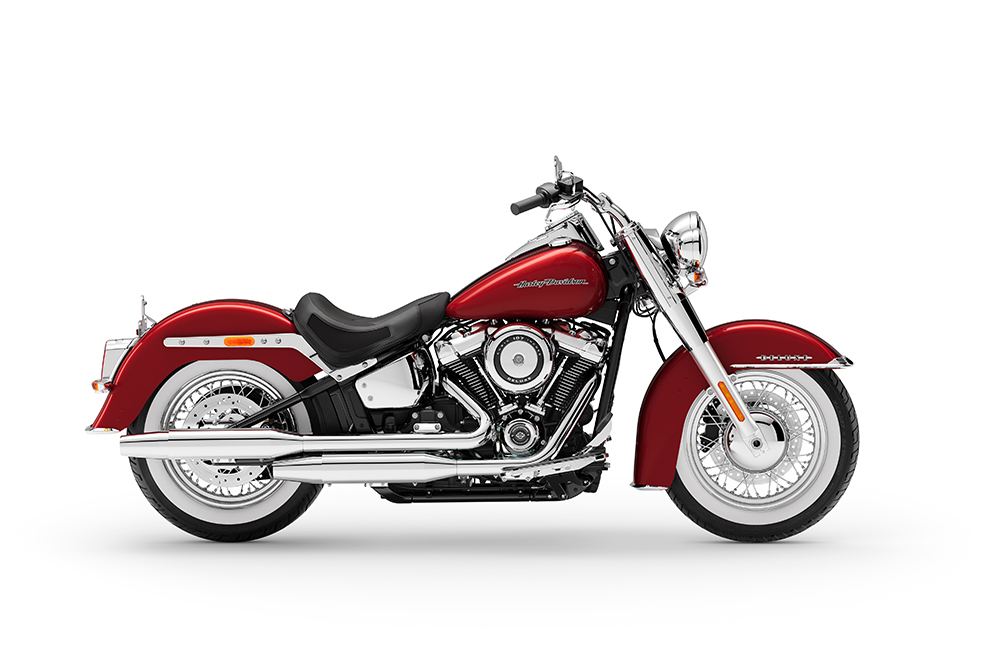
Sport Glide
Surprise package
The Sport Glide was the first of the Touring Softails I rode at Eastern Creek, it looked formidable and large, and I had no idea what to expect of it on a racetrack. I needn’t have worried; it handled intuitively and stopped better than its 317kg (wet) heft ought to. The 107 cubic-inch engine propels it along with as much vigour as you’d need, and it’s got decent ground clearance compared to other bikes in the Touring segment. It’s not ‘sporty’ when compared to the FXDR or the Fat Bob, but the mini batwing fairing and panniers are both removable, turning it from a practical mile eater into what feels like a stripped-back, more sporty ride. It’s by far the most versatile in terms of matching your mood and needs on any given day.
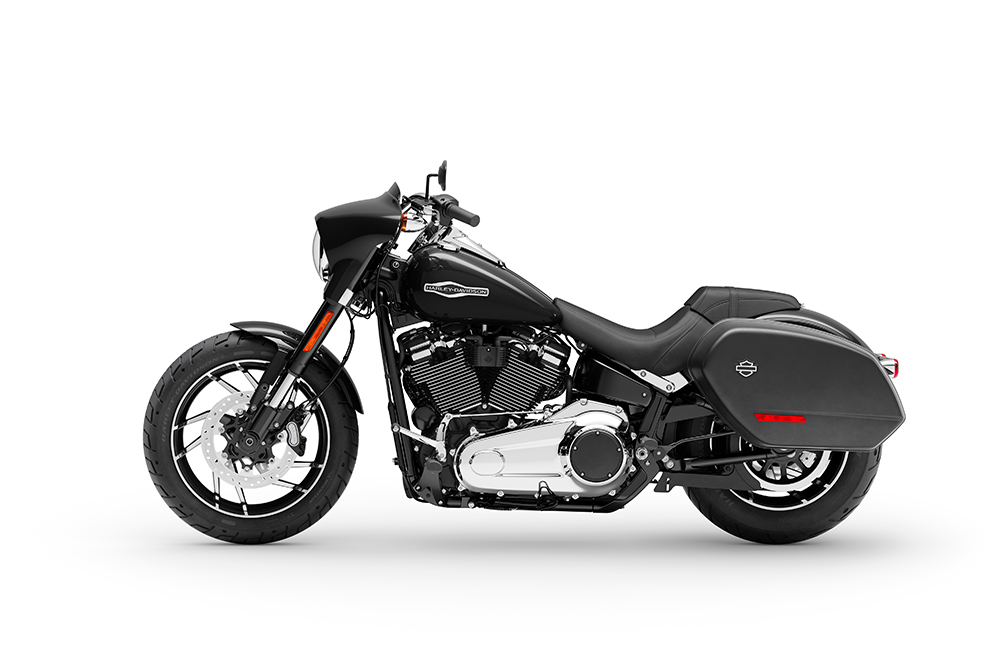
Heritage Classic
Blacked-out Gangster
The Heritage Classic looks like an old gangster’s bike, but with the blacked-out motor, fork and wheels giving it a modern look. You could tour all month on the Heritage Classic, it’s very comfortable, with a roomy cockpit and pulled-back bars. The Heritage suffered a bit in the 50km/h winds we experienced on the day due to its large windscreen. Despite its 316kg bulk, the wind caused a great deal of buffeting of both the bike and rider, especially coming over the top of turn 10 and dropping down the hill, where the wind gusts would turn the screen into a sail and really unsettle the bike. As with the Deluxe, the Heritage drags its footboards at even the hint of a corner but always remains composed when it does, and the overall package is certainly an improvement over the previous generation.
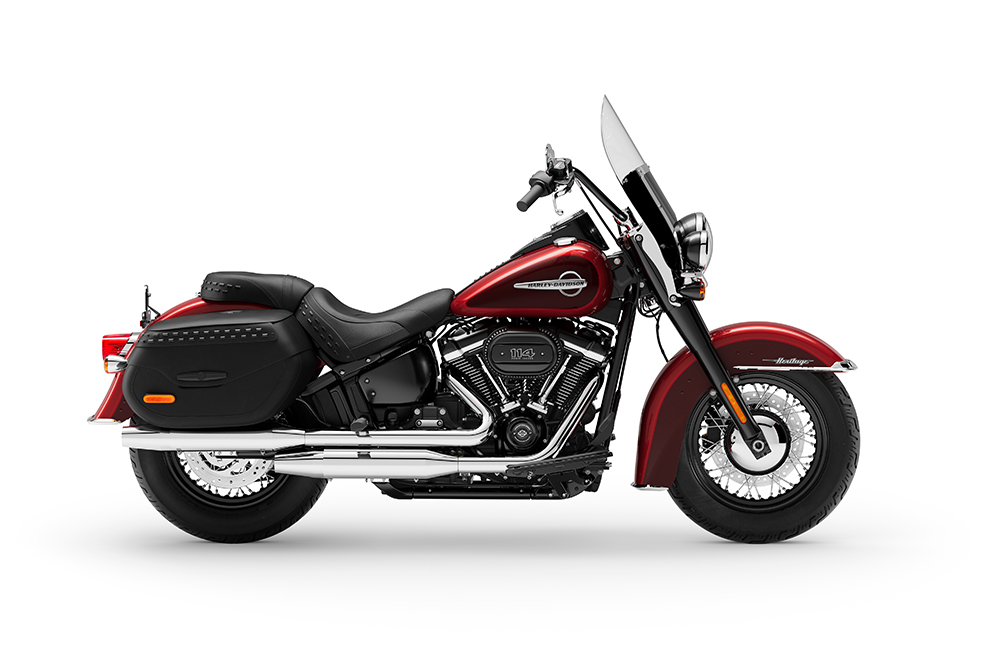
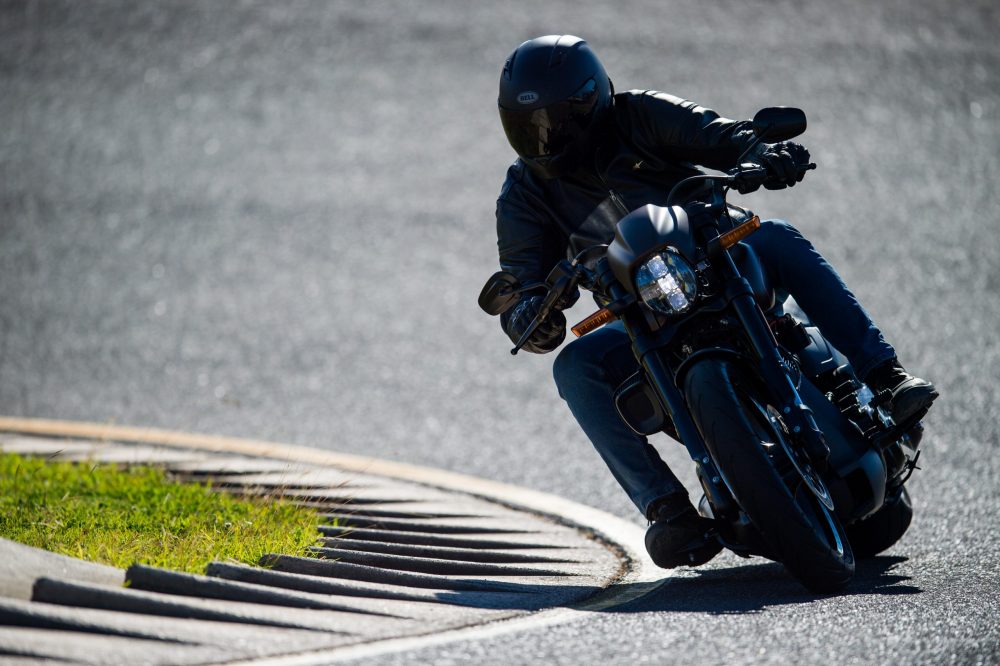
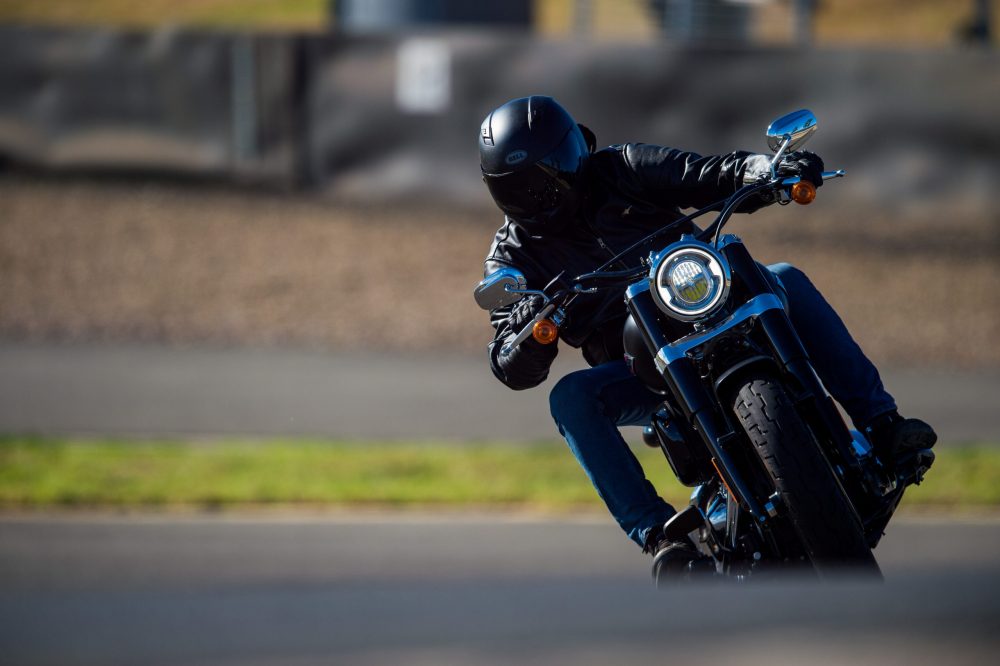
TEST: PETE VORST PHOTOGRAPHY LYNDON MARCEAU